The 350 Overhead Valves
The 70 x 90 OHV 350s
1924 to 1938
1924 was a year of firsts for the Sunbeam. It was the year the now familiar model number system was introduced, and it was on the new overhead-valve models 8, 9, 10 and 11 that most of the new features were to be found. The 1924 OHV Model 8 featured overhead valves for the first time on a Sunbeam. These were controlled by triple return springs. An EIC magneto was fitted, and an AMAC carburetor. Engine lubrication was by the Sunbeam-patented fully enclosed automatic dry-sump system. The standard fuel tank also had an oil compartment, but an optional separate oil tank could be ordered, giving increased petrol capacity. A special detachable aluminium silencer could be ordered. To enable the cylinder head to be removed without taking the engine out of the frame, the tank tube, complete with tank, could be detached by undoing two bolts, and to accommodate the straight-through single port head, the frame featured a bifurcated front down-tube. Marstons called this a “Duplex Frame”! How seriously these two “improvements” compromised the stiffness of the frame can hardly be imagined. This Model 8 also featured, again for the first time on a Sunbeam, internal-expanding brakes, front and rear. The v-twins had ie rear brakes from 1914 onwards, and they were also worn by the touring 3 ½ and 4 ¼ HP/Model 7s but never on the front. The more sporting models retained belt-rim brakes front and rear right up until 1924. The front chaincase was fully enclosed, as with all other Sunbeam models, but a kick-starter could not be fitted.
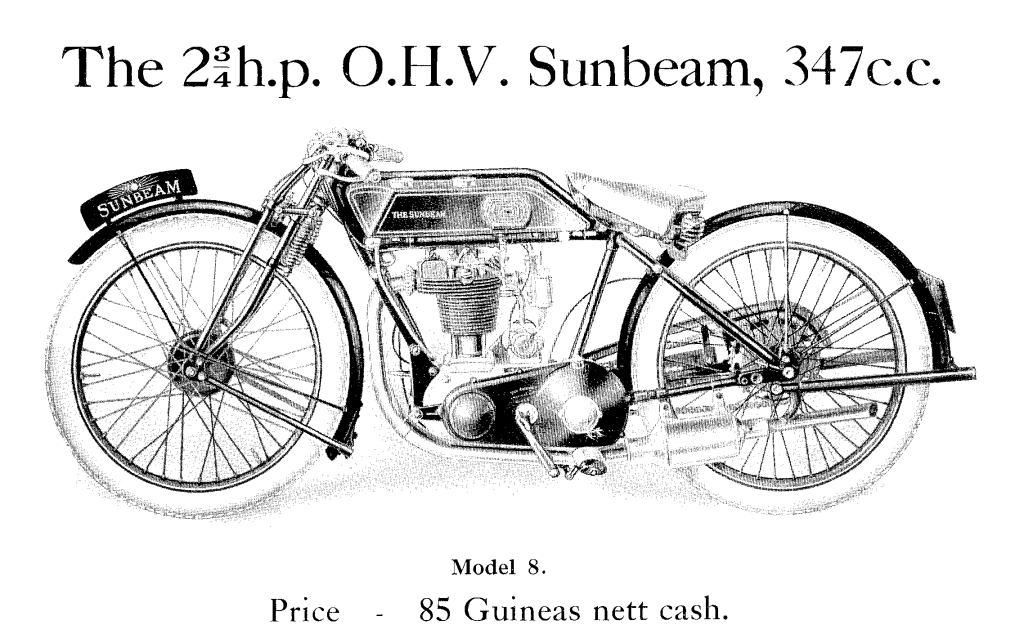

A second version of the new OHV 2 ¾ hp model was the Model 10 Sprint. This was intended as a racing machine and had a sloping top tube and small triangular petrol tank. The standard Model 8 quickly became known as the “Parallel” to distinguish it from the Sprint.
Both Models continued for 1925, but with little change, although Sunbeam patent hairpin valves-springs could now be specified. The illustration below shows the aluminium silencer which was still a catalogue option. A full rear chaincase, detachable carrier with twin tool bags, and a Maglita lighting set could be specified.
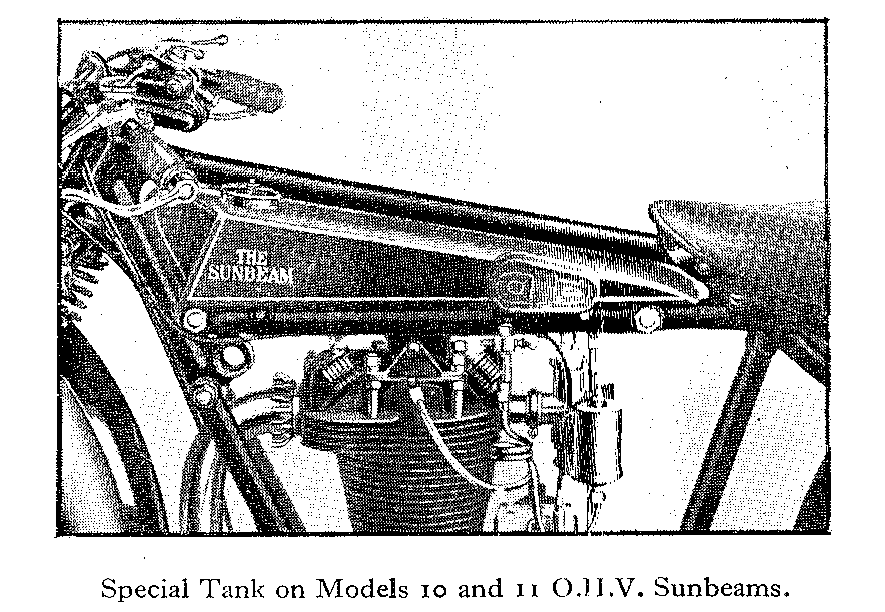
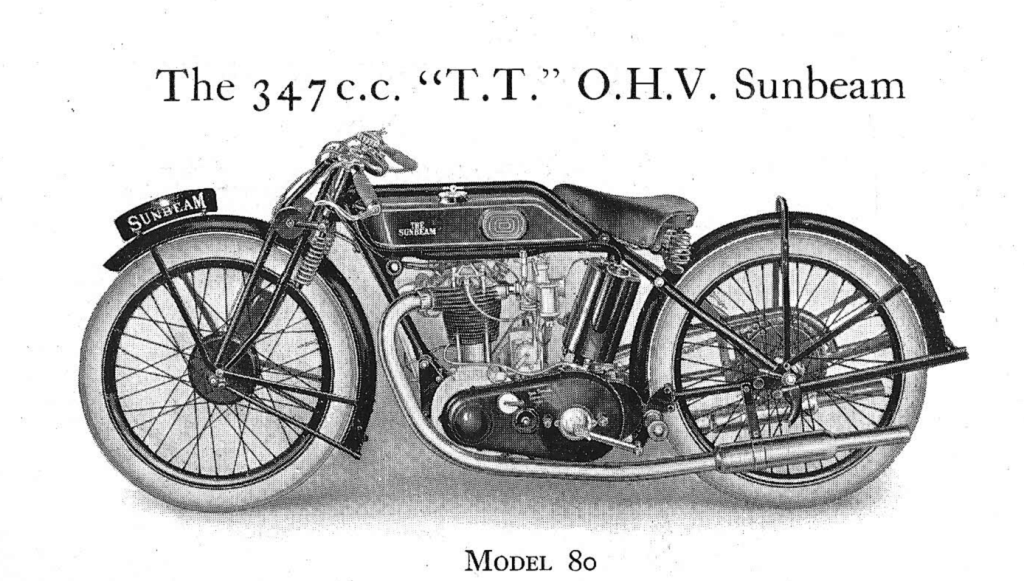
1927 saw major changes across the Sunbeam range, and the Model 8 disappeared! The ohv 350 continued, however, in the shape of the TT Model 80. This featured larger brakes, a stiffened front fork, and wider gears in the (still!) three-speed gearbox. As standard there was no kick-start, but such a fitment could be specified. The engine now had stiffened valve-gear, featuring the now-familiar H-shaped rocker support plate. The engine had hairpin valve-springs as standard, and two-port heads were also introduced. Oil was now held in a separate seat-tube mounted oil tank, with an auxiliary oiling lever on the handlebars, and the whole thing was topped off with that beautiful Bullnose tank. The rear brake is rod-operated via a cross-shaft behind the gearbox.
The Model 80 continued without significant change for 1928, its intended market the clubman racer. Few of the more touring accessories catalogued for the M90 were listed for the M80, although Marston’s would fit whatever was in the parts bin!


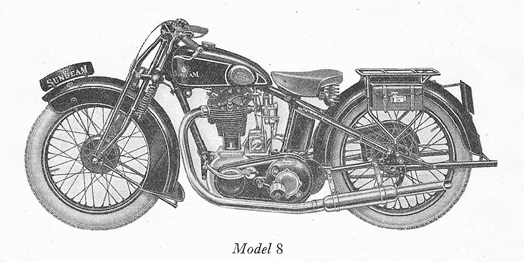
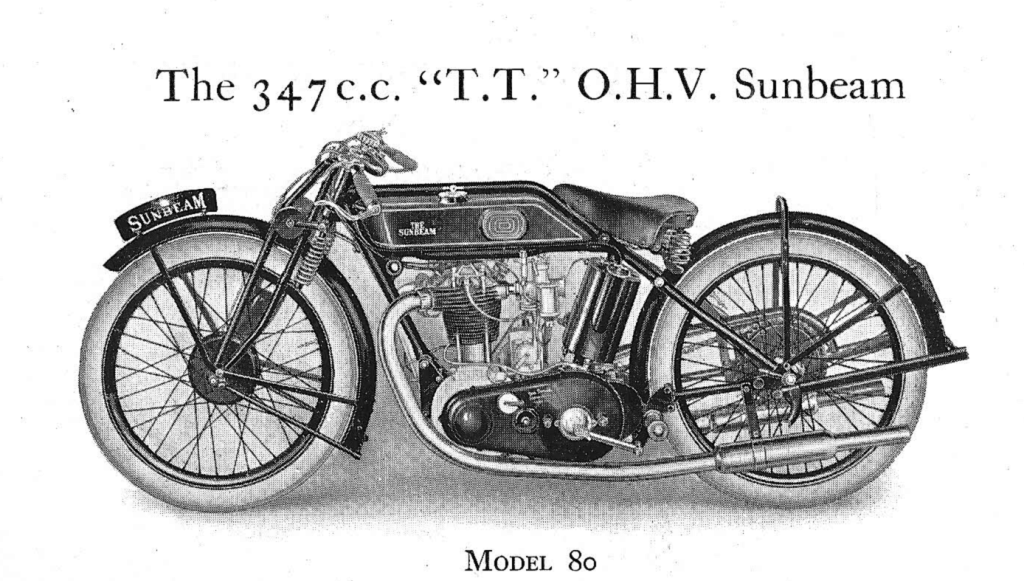
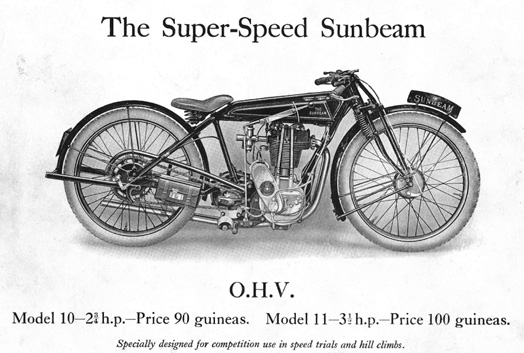
1929 and the Model 8 is back to rejoin its sporting sister, the TT Model 80! What is really new, however, is the frame designed to accommodate, at last some said, a bulbous saddle tank, still of soldered construction and to achieve the then-fashionable low riding position. The engine now has the pushrods enclosed in chrome-plated tubes, and a six-spring clutch replaces the old single-spring unit. A single-port head was now an available option.
The Model 80 continued with the rod-operated rear brake, hairpin valve springs are standard, and the forks carry Bentley and Draper friction shock-absorbers, or stabilisers as they were described in the catalogue. This model was listed without a kick-starter, and an abbreviated primary chainguard was fitted as standard.
Little changed for 1930, with both Model 8 and model 80 listed. A new type of detachable rear carrier was introduced on the M8, and “new pattern” forks incorporating a new adjustable damper were included.
The Model 8 was phased out in 1931, replaced by the lightened and cheapened 74 x 80mm, 344cc Model 10. It was the end of the Model 8, or was it…….?
1922 Model 8

1938 Model 8




